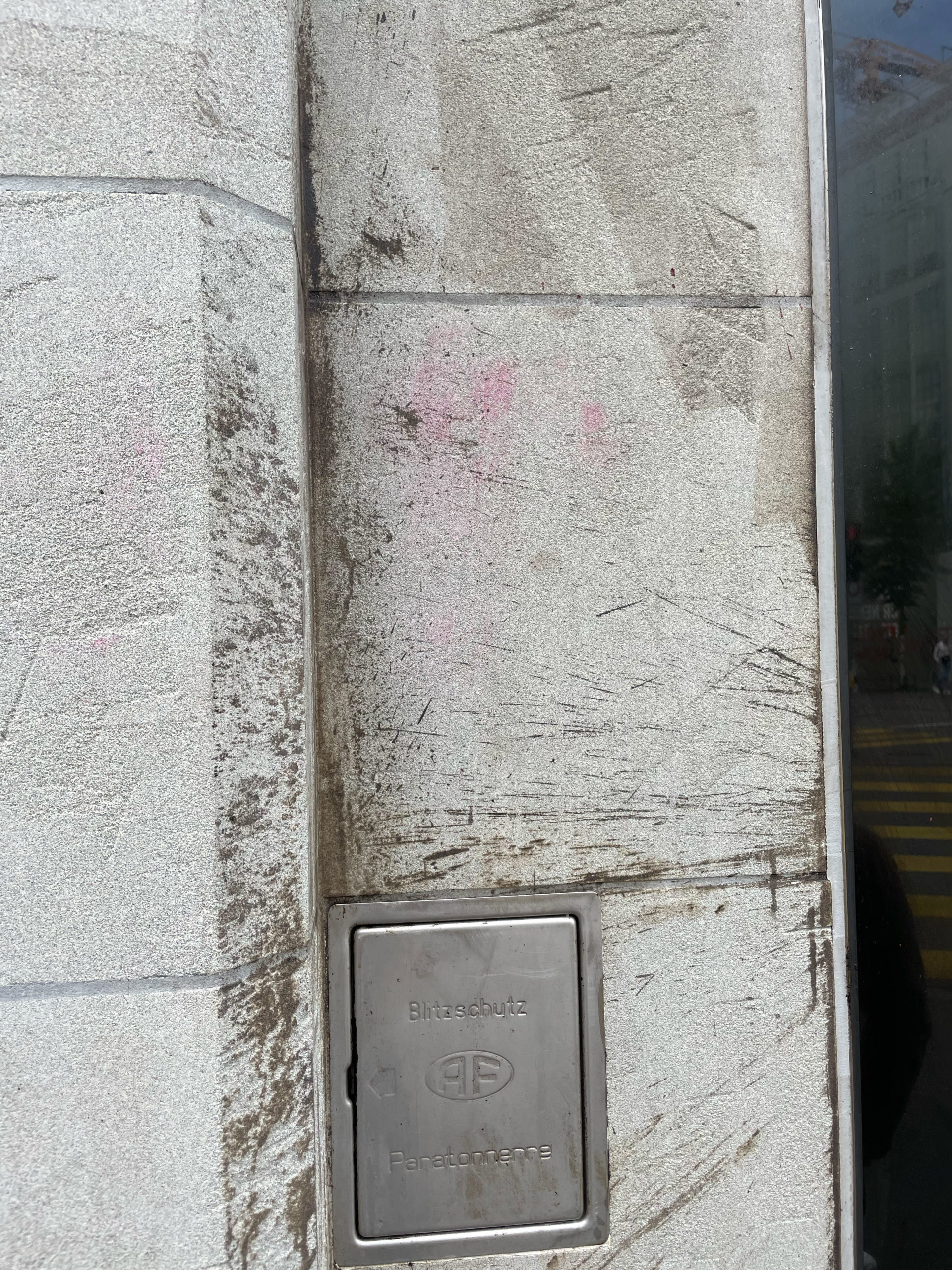Production of Common Values within the Mineral Repository of Zurich
Buchberger Sandstone
Buchberger Sandstone

Since the Roman period, the city of Zurich has built with Buchberger sandstone from Lake Zurich’s Obersee. Already being vividly used in the Middle Ages, building in stone in Zurich started due to fire regulations and as a manifestation of social status. Between 1850 and 1910, this sandstone became crucial to the construction of Zurich’s representative buildings: the new main station, the Bahnhofstrasse, and Semper’s building for the ETH. After the First World War, the demand for local natural stone diminished due to easier transport options for imported alternatives, and their replacement with new artificial stones such as concrete or brick. Today, the quarry is still as one of four by Lake Zurich’s Obersee operated and maintained by Kuster AG, and recently received greater importance in the field of preservation heritage.
By extracting this common-pool resource and processing its materials, common values are created. Sandstone, as a sedimentary solid material, implies the long and visible further processing by hand and machine. Precise labor skills leave visible traces on the material, and the stone gains additional value through precise hand carving. The more the sandstone is handled, the more valuable it becomes. In this way, the Buchberger sandstone creates visible values, such as an artistic labor value, which is inherited and highly art-historical, a representational value for the city itself. The effort of labor with the material of sandstone creates common values. Through processing material commonly, a common identity for the citizens is created.
By negotiating working conditions through the physical effort involved in stone extraction, which led to sickness, deaths and strikes, appreciation for the material itself occurred amongst the stone workers themselves, who formed new organizations of common practice. Starting with the “zur Zimmerleuten” guild in the early-fourteenth century, where market and trade knowledge were shared, the “Zürcher Steinarbeiterorganisation”, founded in 1846 as the first labor organization in Switzerland, introduced principles of welfare, such as provisions for old age, widows, and health.
Furthermore, the embodiment of labor within the material of stone is strongly connected to the physicality of the workers. Every hand operation on the material leaves traces. The value of sandstone facades is generated by the sheer effort that goes into any building with high craftmanship. Signs of authorship, skills and belonging are shown on each facade within the city, for example through stone mason signs.
Within today’s globalization and technologization, the local stone industry in Switzerland is under strong pressure from foreign competition, especially from China, due to the complex refinement process. In order to remain competitive, new technologies are increasingly being used, causing a shift from material to immaterial labor. The younger generation, which seems to be becoming more and more sparse, is losing its direct connection to the material.
All these aspects give a specific texture to our city of today through physical craftmanship. The patchwork-like facades show signs of care-taking and authorship, but also of conflicts. Bringing back the impact of labor to our facades, by starting again in building with the sustainable material of natural stone, must be considered if we want to have a representational city of common value.
Albertini, Giovanni, et al. Hundert Jahre Steinarbeiter Zürich, 1846-1946 : (grosse) Jubiläumsfeier (verbunden mit) Veteranenehrung, Zürich, 23. März 1946. 1946.
Niggli, Paul, and Francis de Quervain. Die Bodenschätze der Schweiz. E. Rentsch, 1941.
Kündig, Rainer. Die mineralischen Rohstoffe der Schweiz. Schweizerische Geotechnische Kommission, 1997.
Sandstone slab in the harbour of Schmerikon showing two workers loading stones.
Moser. 2019.

Stone quarry work.
Company archive Kuster AG, 2018.

Stone masons transport a sandstone block.
Partei der Arbeit des Kanton Zürichs (PdAZ), Schweizerisches Sozialarchiv, ca. 1950.

Stone masons signs at the Fraumünster in Zurich.
Reiz, Nathalie, Zurich, 2022.

Traces of paint attack on the facade on the Bahnhofstrasse in Zurich.
Reiz, Nathalie, 2022.
